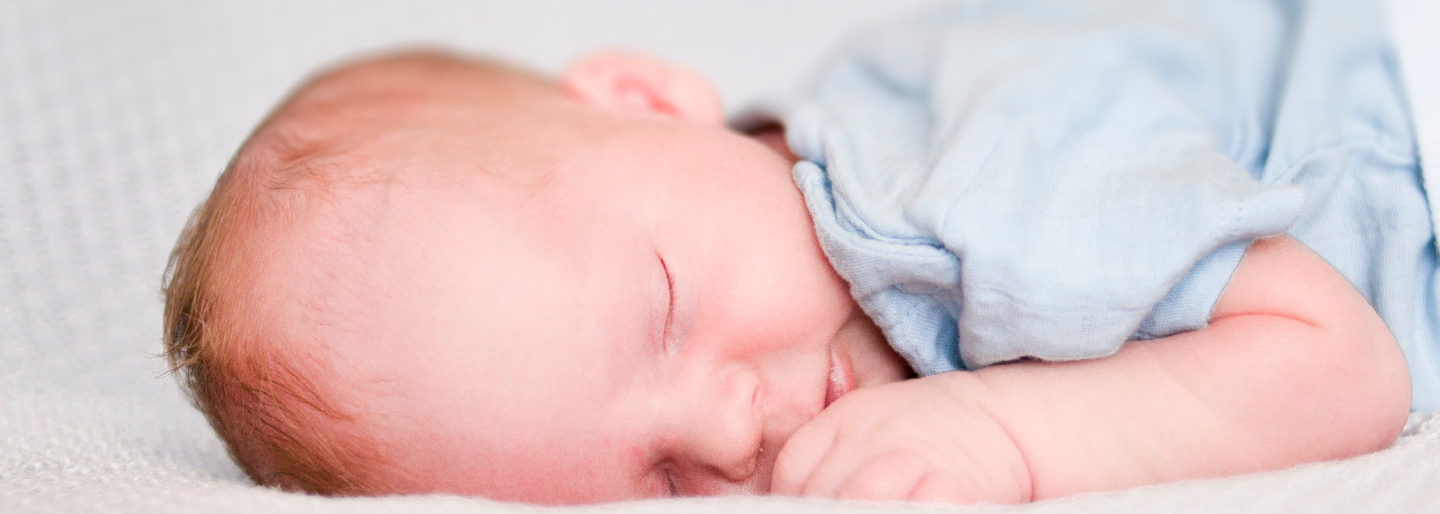Sudden infant death syndrome is the sudden and unexpected death of an apparently healthy baby under the age of one year. The causes of SIDS are still under study. Still, some preventive factors have been identified that have led in many countries to a considerable reduction in the incidence of the syndrome, up to 90%.

What is Sudden Infant Death Syndrome?
Sudden Infant Death Syndrome (SIDS) refers to the sudden death of children under the age of one year (most often between the second and fourth month of life), which occurs during sleep and which, even after meticulous investigations (including autopsy), finds no explanation. It is also known as “cradle death” or “white death”. It has become the leading cause of infant death in developed countries.
Causes of Sudden Infant Death Syndrome
The researchers investigate the causes, but at the moment they have not yet determined with certainty the responsible mechanism. One hypothesis they are working on concerns the brain centers that control breathing and cardiac activity in sleep. Some defects in their functioning would cause some newborn babies to suddenly stop breathing and beating. This would be a defect that for now, we are unable to diagnose before the event and even not recognize it after the autopsy.
It seems, therefore, that predisposed children exist, but since we do not know how to distinguish them from others, we must assume that all of them can be exposed to SIDS. And at this point, the risk factors come into play and, therefore, all the prevention strategies that can be put in place.
What If It Was Heart Disease?
This is a distinct possibility from SIDS: the sudden and unexpected death of a child may be due to a previously undiagnosed congenital heart disease and can only be found with a post-mortem examination. In this case, however, it would not be SIDS, which by definition, is a death that remains unexplained1.
Preventive campaigns
To reduce the risk of SIDS, an information campaign has been launched worldwide for parents and operators of childcare services called Back to sleep. This refers to the importance for infants of sleep on their back and belly up, and which includes several recommendations on preventive factors, periodically updated by the international pediatric scientific societies.
Since the information campaign started in many countries, there has been a clear and constant reduction in SIDS cases, sometimes even up to 90%. On average, there are currently 0.2-0.5 cases per year for every 1,000 births2.
Some Known Risk Factors
Among the causes of SIDS, still under study, there are defects in the maturation of the brain circuits that govern the “awakening capacity” of children, especially in dangerous conditions such as oxygen deficiency (for example, during respiratory infections or if the airways are blocked). Then there are concurrent causes: prematurity, low birth weight, smoking habit, and alcohol intake by the pregnant mother. Finally, some “precipitating” environmental factors: sleep on your belly or sideways, excessive overheating, passive smoking, feeding with formula, feverish illnesses, and sleeping on unsuitable surfaces with too many blankets or pillows. In particular, the children most at risk are those born premature or with low birth weight (less than 2.5 kg) and the children of pregnant smoking mothers. Breastfeeding has a protective effect3.
Bed-sharing Risks
Parents who choose to share their bed with their baby can pose a higher risk for very young infants (up to about four months) or up to 6-8 months if there are some particular situations:
– Smoking parents or massively obese.
– Parents with reduced vigilance conditions (use of alcohol, drugs, drugs that induce sleepiness, excess fatigue, illnesses, etc.).
– Excessive temperature (feverish infant or numerous blankets and pillows).
– More than two people in bed.
– Born premature or weighing less than 2.5 kg at birth.
How to Make an Infant Sleep Safe?
– Supine position (belly up).
– Sleep in the parents’ room.
– Do not expose it to cigarette smoke.
– Avoid temperatures above 20 ° C in the bedroom and excess clothes and blankets. Keep your head exposed.
– The mattress should be quite firm and of the exact size of the crib/cot.
– Avoid cushions and soft objects around the head (stuffed animals, padded bumpers, positioners for infants). The “anti-suffocation” cushion does not protect!
– Do not let him sleep on sofas, upholstered cushions, quilts, and water beds.
– Breastfeed him.
– The pacifier can be protective, in any case, it must be proposed after the first month of life when breastfeeding is well started4.
Although the causes of death in a cot are still unknown and inexplicable, thanks to the evolution of studies on infant mortality, international experts have managed to identify a series of measures and measures to prevent SIDS. These are very simple practices that you can easily implement, significantly reducing the risks for your child.
[1] Science Daily. “Genetic heart diseases cause fewer SIDS deaths than previously thought, study finds.” 12 March 2018.
[2] National Institute of Health. “Explore the Campaign”. Accessed 25 April 2020.
[3] Edgar, Chatarine. “How To Prevent Sudden Infant Death Syndrome (SIDS)”. 28 Jan. 2020.
[4] March of Dimes. “Safe sleep for your baby” Accessed 25 April 2020.
